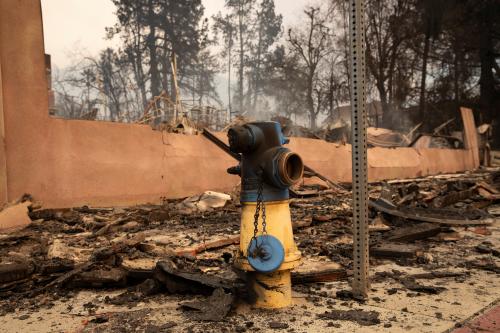Reproduced by permission of Current History (October 2004).
Siberia has loomed large in perceptions about
Russia’s place in the world. Throughout Russia’s
modern history, Siberia’s size—it encompasses
more than three-quarters of Russia’s total
territory—and its geostrategic position astride the
Eurasian landmass have contributed significantly
to Russia itself. And the exploration and development
of Siberia have helped shape Russian national
identity. Siberia has been seen as Russia’s “treasure
chest,” the source of new wealth, new territory, and
folk traditions that evolved alongside the unique
cultures of Siberia’s indigenous peoples. Russian
writers have extolled Siberia as the “untamed frontier”
and a “New World” savior for the rest of Russia.
As late as the 1980s, a statement attributed to
Mikhail Lomonosov, the great Russian scholar of
the eighteenth century—”Russia’s power will grow
with Siberia”—adorned the walls of Russia’s science
classrooms.
Siberia, as the primary repository of Russia’s massive
natural resource base, has played a vital role in
underpinning the Russian economy. Furs from the
forestlands across the Ural Mountains and Siberia,
along with salt and minerals, bolstered the economy
of Muscovy and the early Russian empire from the
fifteenth to the eighteenth centuries. Siberia’s mineral
resources fueled the industrialization of the Russian
empire in the nineteenth century and the
development of Soviet industry after the 1917 revolution.
West Siberian oil became the mainstay of the
late Soviet economy from the 1960s, and it remains
the backbone of the Russian economy today.
According to Russian calculations, Siberia holds
just under 80 percent of Russia’s oil resources, about 85 percent of its natural gas, 80 percent of its coal,
similar amounts of precious metals and diamonds,
and a little over 40 percent of the nation’s timber
resources. As a result of this rich base, and its
exploitation, Siberia is in many respects what geographer
David Hooson would call Russia’s “effective
national territory,” or its economic heartland—the
region that produces a surplus relative to the size of
its population and that essentially supports the rest
of the country. As a number of recent studies by
geographer Michael Bradshaw and economist Peter
Westin have demonstrated, with the exception of the
city of Moscow and the industrial region of Samara
in the Urals, the major contributors to the Russian
economy in terms of per capita gross regional product
(GRP) are all natural-resource regions, primarily
in Siberia and the Russian Far East. The oil-producing
region of Tyumen in West Siberia tops the list;
then Chukotka, also a major energy producer; Sakha
(Yakutia), the site of Russia’s world-class diamond
industry; Magadan, a major mining region; Sakhalin,
the island repository off the Pacific coast of one of
Russia’s richest new finds of oil and gas; and Krasnoyarsk,
a vast coal mining, mineral, and precious
metal producing region.
View Full Article (PDF—408kb) Get Adobe Acrobat Reader
The Brookings Institution is committed to quality, independence, and impact.
We are supported by a diverse array of funders. In line with our values and policies, each Brookings publication represents the sole views of its author(s).



Commentary
Siberia: Russia’s Economic Heartland and Daunting Dilemma
October 1, 2004